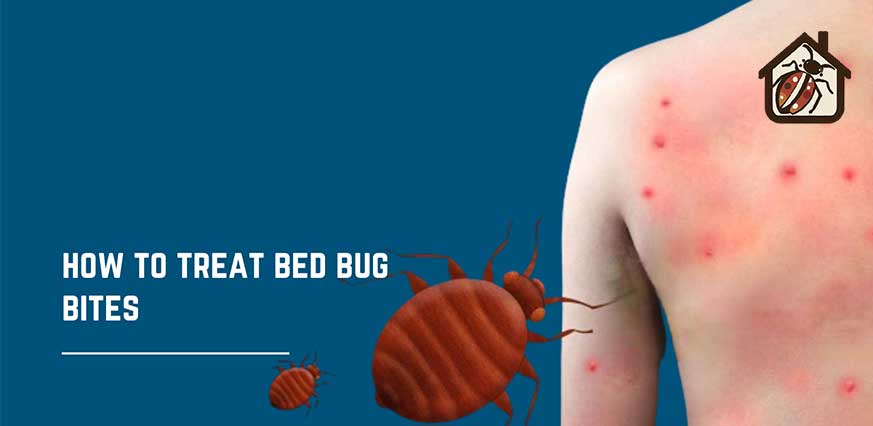
Get ready to take charge of and treat bed bug bites right from your home! We’ve got the lowdown on DIY solutions that work—no more itching, redness, or swelling keeping you up at night. Say bye-bye to sleep troubles and hello to peaceful nights. We’re here to show you how to kick those bed bug bites to the curb and reclaim your bed bug-free zone! Let’s dive into easy self-care – your ticket to a bite-free, restful sleep!
What do bed bug bites look like?
| Bug | Size of bite | Color | Location | Symptoms |
Common Bed Bug |
1-2 mm | Reddish-brown | Exposed skin, especially arms, legs, shoulders, neck, and face | Itching, redness, swelling, welts |
Tropical Bed Bug |
1-2 mm | Reddish-brown | Exposed skin, especially arms, legs, shoulders, neck, and face | Similar to common bed bug bites |
Bat Bug |
2-3 mm | Dark red or black | Anywhere on the body | Itching, redness, swelling, welts |
Swallow Bug |
1-2 mm | Reddish-brown | Exposed skin | Itching, redness, swelling |
Western Conifer Seed Bug |
1-3 mm | Red or brown | Anywhere on the body | Painful sting, localized swelling |
Kissing Bug |
1-5 mm | Red or brown | Lips, face, exposed skin | Painful bite, localized swelling, potential risk of Chagas disease transmission |
What are common reactions to bed bug bites?
Itching
This is the most common reaction to bed bug bites and can be intense, leading to scratching and irritation. Try looking up ways to treat bed bug bites or seek professional help.
Redness and swelling
The affected area may become red and swollen, often forming welts or bumps.
Blisters
In some cases, bites may develop fluid-filled blisters. You should immediately seek professional help to treat your bed bug bite if it forms blisters.
Hives
Some people may develop hives in response to bed bug bites, which are raised, itchy bumps that can spread to other areas of the body. This causes a lot of discomfort so try and get help to treat bed bug bites.
Skin infections
Scratching the bites can increase the risk of developing a secondary skin infection. So, instead of momentary relief, treat bed bug bites with proper treatment options,
Other possible reactions of bed bug bite
- Insomnia and anxiety: The discomfort and stress of bed bug bites can make it difficult to sleep and may lead to anxiety, thus needing you to treat bed bug bites as soon as you can.
- Allergic reactions: In rare cases, people may experience a severe allergic reaction to bed bug bites, which can include symptoms such as wheezing, difficulty breathing, and swelling of the face and throat.
- Psychological effects: Bed bug infestations can be emotionally and psychologically distressing, leading to feelings of fear, disgust, and shame. The sooner you treat bed bug bites, the better.
Learn how to treat bed bug bites at home
While bed bug bites are often uncomfortable and itchy you can treat bed bug bites at home with simple measures. Here’s initial care what you can do:
Wash the bites
You can treat bed bug bites by washing them. Gently wash the affected area with soap and water to remove any dirt or debris that could lead to infection.
Apply a cold compress
Apply a cold compress wrapped in a clean cloth to treat bed bug bites to reduce swelling and itching.
Take an over-the-counter antihistamine
Treat bed bug bites with medications like diphenhydramine (Benadryl) or loratadine (Claritin) which can help reduce itching and inflammation.
Moisturize the skin
Treat bed bug bites by applying a gentle moisturizer to the affected area to prevent dryness and cracking.
Additional Treatment Options
- Calamine lotion: Calamine lotion can help treat bed bug bites itching and irritation.
- Hydrocortisone cream: Over-the-counter 1% hydrocortisone cream can treat your beg bug bite, help inflammation, and relieve itching.
- Prescription medications: For severe cases, a doctor may prescribe oral corticosteroids or other medications to manage inflammation and itching to treat bed bug bites and the reaction of the bite.
Possible delayed reactions of bed bug bites
It is essential to know the possible delayed reaction to some of the bites so you can treat bed bug bites timely and avoid future discomfort.
More intense itching and swelling
The initial itching and swelling may worsen and become more widespread so, take medications or a cold compress to treat your bed bug bite.
Skin lesions
Blisters, vesicles, or pustules may develop on the bite sites.
Hives
Raised, itchy bumps can appear on other areas of the body, not just the bite sites.
Angioedema
This is a severe allergic reaction that causes swelling of the deeper layers of the skin, typically around the eyes, lips, and mouth. So if this is the sensation you get, immediately treat bed bug bites.
Systemic reactions
In rare cases, a severe allergic reaction can lead to systemic symptoms such as wheezing, difficulty breathing, and dizziness.
Factors contributing to delayed reactions
- Prior exposure: People who have been bitten by bed bugs before are more likely to experience delayed reactions.
- Sensitivity: Individual sensitivity to bed bug saliva plays a role in the severity of reactions.
- Skin conditions: Existing skin conditions like eczema or psoriasis can make individuals more susceptible to delayed reactions which can delay treatment for your bed bug bite.
What to do if you experience a delayed reaction?
- Apply a cold compress: This can help reduce swelling and itching.
- Take an over-the-counter antihistamine: Treat bed bug bites with medications like diphenhydramine or loratadine that can help alleviate itching and inflammation.
- Apply topical corticosteroids: Over-the-counter 1% hydrocortisone cream can help reduce inflammation and relieve itching.
- Seek medical attention: If you experience severe symptoms like hives, angioedema, or difficulty breathing, consult a healthcare professional immediately.
How to prevent bed bug bite delayed reactions?
- Treat the bed bug infestation promptly: This is the most effective way to prevent future bed bug bites and the associated reactions.
- Strengthen your immune system: Eating a healthy diet, exercising regularly, and getting enough sleep can help boost your immune system’s ability to respond to allergens.
- Use protective measures: Consider using mattress and box spring encasements, and regularly inspect your home for signs of bed bugs.
How to Prevent bed bug bites
Regularly inspect your bed and furniture
Look for live bugs, shed exoskeletons, bloodstains, or fecal spots, which are tiny dark spots. Pay close attention to seams, crevices, and tufts of fabric.
Wash bedding and clothes frequently
Wash your bedding, including sheets, blankets, and pillowcases, in hot water (at least 120°F) every week. Dry them on high heat to kill any bed bugs or eggs.
Inspect used furniture and luggage
Before bringing used furniture or luggage into your home, carefully inspect them for signs of bed bugs. If you suspect an infestation, consider leaving the items outside or treating them with heat or insecticides.
Use mattress and box spring encasements
Encase your mattress and box spring in specially designed-covers to prevent bed bugs from getting inside and hiding.
Seal cracks and crevices
Seal any cracks and crevices in your walls, floors, and furniture to eliminate potential hiding places for bed bugs.
Vacuum regularly
Vacuum your floors, furniture, and bed frame regularly, paying particular attention to areas around seams and edges. Dispose of the vacuum cleaner bag immediately after use.
Minimize clutter
Clutter provides hiding places for bed bugs. Reduce clutter in your bedroom and other living spaces to make it harder for them to hide.
Be aware when traveling
When traveling, inspect your hotel room for signs of bed bugs before unpacking your belongings. If you suspect an infestation, request a different room or consider alternative accommodations.
Stay informed
Educate yourself about bed bug identification, signs of infestation, and prevention methods. This will help you take proactive steps to protect yourself from bites.
You may also like:
FAQs
What are the common symptoms of bed bug bites?
Are bed bug bites dangerous?
How long do bed bug bites last?
What are the common types of bed bugs found in Canada?
Where can I get help with a bed bug infestation in Canada?
Conclusion
Living in Canada doesn’t guarantee you’ll never encounter bed bugs, but it does empower you to take control and prevent them from affecting your well-being. By understanding the symptoms of bed bug bites, you can treat bed bug bites with various treatment options, and by implementing the prevention strategies outlined in this article, you can significantly mitigate the risk of experiencing these itchy, uncomfortable encounters.
Remember, vigilance is key. Regularly inspecting your surroundings, maintaining a clean and clutter-free environment, and seeking professional help at the first sign of an infestation are crucial steps in ensuring a bed bug-free and peaceful living space. Don’t let these tiny pests disrupt your comfort – take action and rest easy knowing you’re equipped to handle them effectively.


